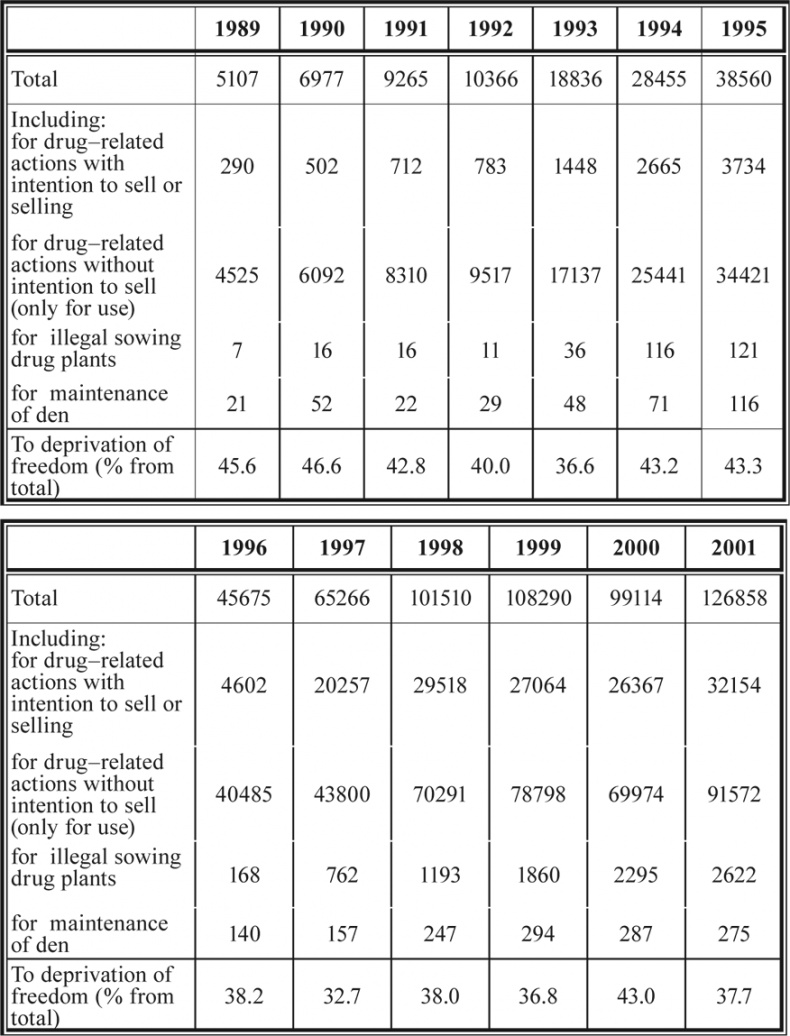Table 5. Rate (per 100.000 inhabitants) of Drug-Related Crimes in Russia (1990-2003)

Source: Crime and Delinquency. Statistical Review. Annual. Moscow: MVD RF, MJ RF. State of Crime in Russia. Annual. Moscow: MVD RF.
Table 6. Convicts for Drug-Related Crimes in Russia (1989-2001)

Source: Crime and Delinquency. Statistical Review. Annual. Moscow: MVD RF, MJ RF
Criminal business arises, exists and develops due to by certain conditions:
• Demand for illegal wares (drugs, arms, etc.) and services (sexual, etc.)
• Dissatisfied demand for legal wares and services (for example, total deficit in USSR)
• Unemployment and others sources of indigency as social basis of deviance, including criminality
• Defects in tax-policy, customs policy of state, etc.
The high degree of adaptability of criminal associations (resulting from their strict labor discipline, their careful selection of staff, the high profits, etc.) ensure their great vital capacity («Mafia is immortal!»). For example, the Russian criminal organizations recruit only the youngest, bravest, and the most enterprising persons.
Contemporary organized crime in Russia began during the 1970-1990 period; that was when some kind of contact was established and collaborations initiated between traditional white-collar criminals, corrupt part functionaries, and the criminals, including old «thieves-in-law»
[504] and the new generation of «bandits» or «sportsmen». This new generation of bandits is made up of young men who were not in the criminal population during the Soviet regime, and, who at the collapse of the Soviet Union, joined some former KGB elements in organized crime and commiying all kinds of vices. Criminals of the new generation shoved energy, activity, and cruelty in deciding a conflict situation that has allowed it to quickly occupy a place under the sun in the criminal world. Contemporary organized crime is a result of this process of amalgamation of the old «thieves-in-law» and «tsekhoviki» (shady operators) with new «bandits» and corrupt representatives of power structures, oriented to the pursuit of heightened levels of illegal (or legal or semi-legal) profit.
The Russian criminal organizations have differently dimensions, organization structure, and specialization, but are united in illegal (criminal) enterprise. The main fields of activity of criminal organizations in Russia are bank speculations (shady transaction), fictitious real estate transaction, stealing and reselling cars, illegal export of non-ferrous metals, production of and traffic in fake hard liquor, arms sales, control over gambling, agencies for supplying sexual service, drug trafficking, and laundering money (Gilinskiy, 2003: 146-164).
Corruption
There are too many definitions of corruption. Perhaps the shortest (and precise) definition is: «the abuse of public power for private profit» (Joseph Senturid). The UNO offers as analogous definition (Resolution 34/169 of the General Assembly UNO, 12.17.1979).
There are too many forms (manifestations) of corruption: bribery, favoritism, nepotism, protectionism, lobbying, illegal distribution and redistribution of public resources and funds, theft of treasury, illegal privatization, illegal ability to finance of political structures, extortion, allowance of favorable credit (contracts), buying of votes, the famous Russian «blat» (different services for relatives, friends, acquaintances) (Ledeneva, 1998), etc.
Corruption is a complicated social phenomenon. It is an element of relations of economic exchange (brokers). It is a type (manifestation) of venality at the same kind as marriage swindlers and prostitution (the venality of spirit or body), and it exists in societies of commodity and pecuniary circulation.
Corruption is a social construction (Berger, Luckmann, 1967). Society determines (constructs): what, where, when, and by which conditions some action is labeled as «corruption», «crime», «prostitution» and so on.
Corruption is a social institution (Timofeev, 2000). It is a constituent element of of the system of management and government. Corruption is a social institution for the following reasons:
• Corruption carries out some social functions: simplifying of administrative relations; acceleration of administrative decisions; consolidation and restructuring of relations between the social classes or strata; aiding economic development by decreasing government regulation; trigger optimization of the economy when there is a deficit of resources; etc. (Leffi 1964; Scott, 1972; and other).
• Process of corruption involves the action of certain persons: the bribe-taker, briber (suborner), and mediator (go-between). There are relations of «patron – client» between them. They play certain social parts.
• There are certain rules (norms) of play, and the partners know these rules.
• Certain slangs and symbols exist (for example, to express a bribe in Russia, you rub three fingers: the thumb, middle finger and forefinger).
• There are certain fixed prices (tariff). Some of these fixed prices in Russia were published in the Russian press.
There is corruption in all countries. It is a worldwide problem. But the dimensions of corruption are diverse. Corruption, common in Russia, has taken on a grand scale in all the organs of power and official establishments. The damage from corruption is about $ 20-25 billion per year. The export of capital from Russia abroad amounts to $ 15-25 billion per year. Every day, the Russian and foreign Mass Media reveal facts of Russian corruption and corrupt activities. Corruption in contemporary Russia is an element of the political system, and a mechanism of the political regime. There are large corruption networks, including ministries, the police, the FSB (former KGB), and so on (Satarov, 2002; Sungurov, 2000).




